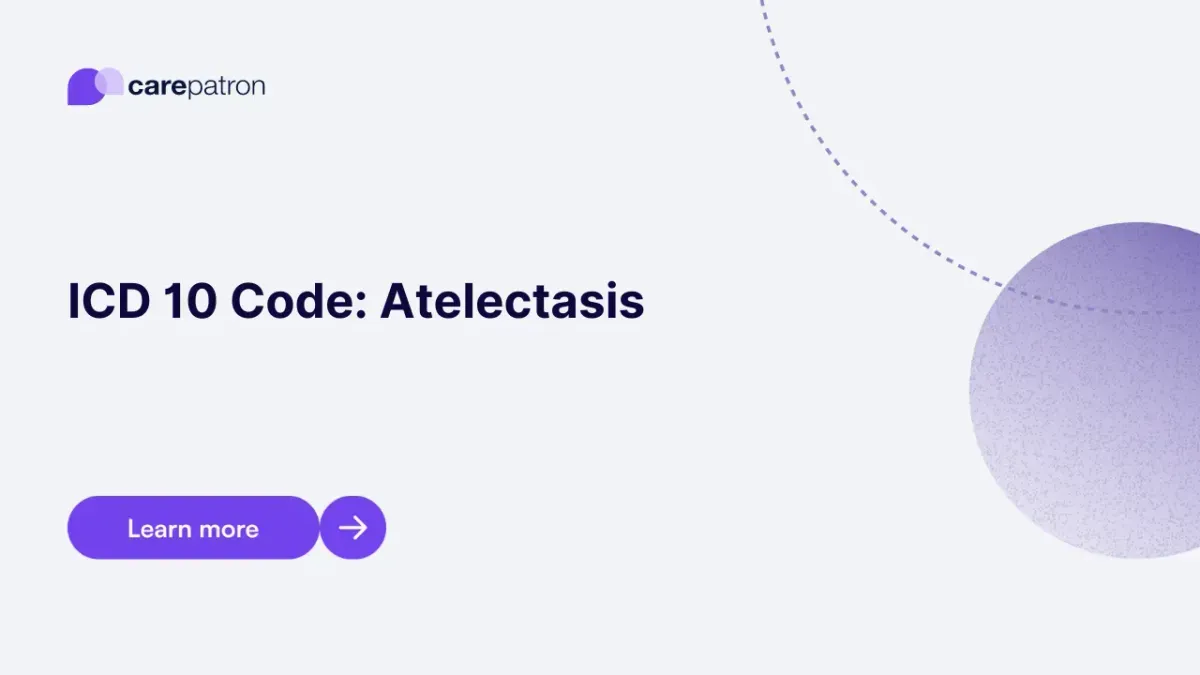
Atelectasis ICD-10-CM Codes
Read this short guide to learn about Atelectasis ICD codes you can use.
Use Code
Commonly asked questions
There are several types of Atelectasis. Here are some examples:
- Compressive Atelectasis is characterized by fluids, blood, tumors, or air pushing against a lung until it collapses.
- Contraction Atelectasis is characterized by lung scarring, usually preventing the alveoli from opening.
- Obstructive Atelectasis is characterized by the collapse of alveoli due to blockages caused by mucus, tumors, or foreign bodies that were accidentally inhaled.
- Resorptive Atelectasis is characterized by the lack of new oxygen entering the alveoli, and this lack will cause the alveoli to collapse.
No, but they are related. Atelectasis is the collapse of the lung's alveoli, which results in the collapse of the lung. Pneumothorax is characterized by air leaking into the chest cavity, specifically in the area around the lung. The air will compress this area, which causes the lung to collapse.
It depends on what caused the collapse and how bad the collapse was. Mild cases of Atelectasis don’t require any treatment (though monitoring is still essential), and the person will get better on their own.
For cases that do require something to be done from the healthcare professional’s end, treatment can include bronchoscopies to remove obstructions, the use of bronchodilators to open up a patient’s airways, and suggesting deep breathing exercises and physical therapy focused on the expansion of the lungs.
EHR and practice management software
Get started for free
*No credit card required
Free
$0/usd
Unlimited clients
Telehealth
1GB of storage
Client portal text
Automated billing and online payments
